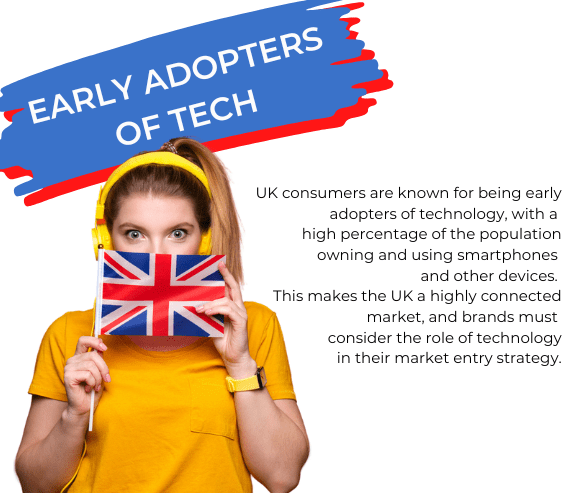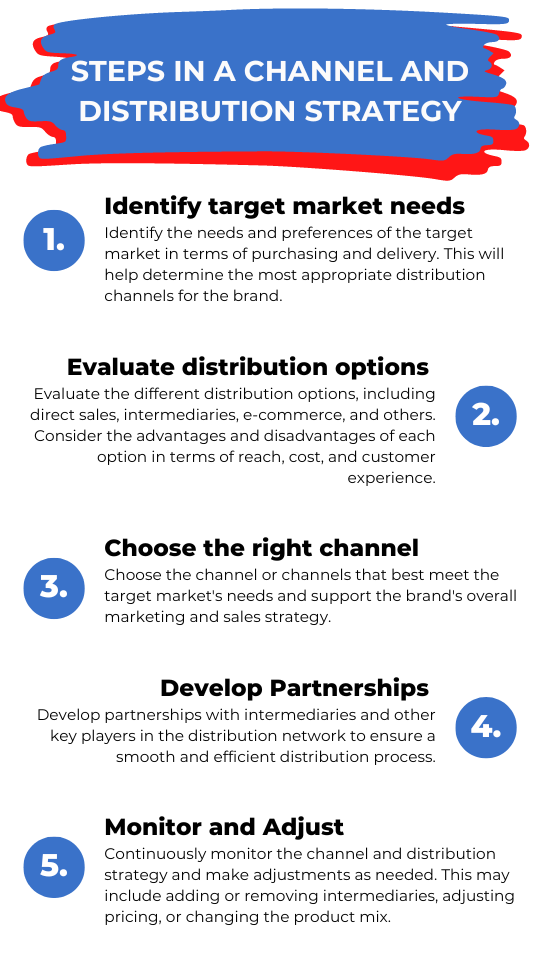The United Kingdom, often depicted as a homogenized tapestry of afternoon tea and red buses, is a labyrinth of complexities that can confound even the most seasoned marketers. To the uninitiated, it’s easy to fall into the trap of seeing the UK as a monolithic entity, particularly when so many international perceptions are shaped by London’s towering influence. Yet, beneath the canopy of its collective identity lies a medley of regions, each with its own distinct cultural heartbeat and consumer behavior.
Foreign brands seeking to penetrate this market often discover that what thrives in Manchester might falter in Cardiff, and what resonates in Belfast may not necessarily translate in Edinburgh. As globalization tugs on the threads of local identities, it has never been more pressing for brands to understand the intricate dance of regionalism that defines the UK.
The UK: A Mosaic of Identities
Venture beyond the capital’s bustling streets, and you’ll find a nation teeming with rich histories, vibrant traditions, and – crucially for marketers – distinct consumer habits.
Let’s begin with the broader picture. The United Kingdom is not merely one country; it’s a union of four: England, Scotland, Wales, and Northern Ireland. According to the Office for National Statistics, as of the last census, England housed approximately 84% of the UK’s population, with Scotland accounting for 8%, Wales around 5%, and Northern Ireland close to 3%. Yet, despite these disparities in population, each country has cultivated its own identity, traditions, and consumer patterns.
England, while the most populated, varies significantly within its own boundaries. The cosmopolitan desires of London’s population, boasting a GDP per capita of 56,431 British pounds as of 2021, often differ significantly from the more industrious North or the coastal South.
In Scotland, there’s a profound sense of national pride. A study by VisitScotland showed that over 60% of Scottish consumers preferred buying local products, a number that spikes during key cultural events and holidays.
Wales, on the other hand, retains a robust commitment to its linguistic heritage. Brands such as Lloyds Bank have acknowledged this by offering services in both English and Welsh, addressing the fact that over 870,000 people, or 29% of the Welsh population, can speak the Welsh language, according to the Welsh Language Commissioner’s office.
Then there’s Northern Ireland, a region with its own unique set of socio-political dynamics. Brands seeking to appeal here must understand that consumer choices often intersect with deeper cultural and historical narratives.
And we’re just scratching the surface. Dive deeper into the individual counties of these nations – from Cornwall’s coastal towns to the Scottish Highlands – and the tapestry grows even more intricate. For instance, Oxford’s average salary in 2022 stood at about £37,000, surpassing the UK’s average, hinting at a more affluent consumer base.
The takeaway? A single, blanket strategy for the UK is not just simplistic; it’s commercially naive. Each region, each country, has its own pulse, its own desires, and its own buying triggers. The question then isn’t whether to localize your approach but how.
Consumer Trends Across the UK: Navigating Unified and Divergent Waters
If there’s one certainty about the UK, it’s that you’ll find as many unifying threads as you will divergences. As marketers, understanding these shared trends while paying heed to regional specialties is paramount. Let’s embark on a whirlwind tour of what binds and what differentiates.
Unified Trends:
Across the UK, certain tendencies bridge the gaps between regions. Digital consumption, for instance, is ubiquitous. According to Ofcom’s latest report, 96% of households in the UK have internet access, and a staggering 88% of adults use smartphones. This digital integration has seen the e-commerce sector skyrocket, with the UK boasting the most advanced e-commerce market in Europe. In 2023, the country expects to have nearly 60 million e-commerce users — leaving only a minority of the population as non-digital buyers. As such, e-commerce has undeniably become the norm for shoppers everywhere in the UK, with the extensive online shopping industry influencing UK consumers daily.
Moreover, a shared interest in sustainability is blooming. Two-thirds of UK consumers say they’ve changed their behavior to be more sustainable. From packaging to product sourcing, the green shift is palpable and imperative to address.
Regional Specialties:
Despite these shared trends, diving deeper into regional waters unveils distinct currents.
Take food preferences, for example. A YouGov survey found that while 68% of English consumers opt for tea as their go-to brew, in Scotland, it’s a closer contest, with coffee garnering a 48% preference. Or consider fashion, where regions like London and Manchester are more receptive to high-end brands, while areas like the West Midlands show a higher inclination for value-for-money retail, as per the UK’s Consumer Spending Report in 2020.
Local festivals also play a role in consumer trends. St. David’s Day in Wales sees a surge in the sale of traditional Welsh products, while Scotland’s Hogmanay is not just a New Year’s celebration but a catalyst for various sectors, from food and beverage to tourism.
Relevance in Resonance:
While these insights might seem like data points in isolation, they are, in reality, the keys to unlocking genuine consumer resonance. A brand’s ability to navigate these unified and divergent waters will determine its success in the dynamic UK market. Whether launching a digital campaign or positioning a product aligned with regional preferences, marketers are tasked with finding the balance between the general and the specific. The landscape may be intricate, but therein lies its charm – and opportunity.
Common Misconceptions about the UK Market: The Peril of Over-Simplification
In marketing, stereotypes can be a double-edged sword. While they can offer an easy route to comprehend a foreign market quickly, they can just as swiftly mislead, resulting in branding blunders or marketing misfires. With its rich tapestry of regional identities and international prominence, the UK has been subject to numerous such misconceptions. Let’s debunk a few.
The London-centric View:
With its iconic skyline and global reputation, London often becomes the default lens through which the UK is viewed. However, equating London’s preferences to the entirety of the UK’s is a gross oversight. Consider the fact that London houses only about 13% of the UK’s population. Moreover, consumers in cities like Birmingham or Manchester have distinct shopping habits and brand loyalties compared to London.
Stereotyping Regions:
From the stoic Scot to the passionate Welsh, regional stereotypes abound. But marketers would do well to tread carefully here. For instance, the notion that all Scots are frugal is debunked by data from the Scottish Household Survey, which highlighted their propensity for luxury goods in certain regions. Similarly, pigeonholing Welsh consumers as primarily rural overlooks the dynamic urban centers like Cardiff, which, according to the Welsh Government statistics, has seen a 12% growth in retail businesses in the last five years.
Over-generalization of Buying Power:
It’s an age-old myth that the South of England, compared to the North, has uniformly higher buying power. While areas like London and Oxfordshire might boast higher average incomes, cities in the North, such as Leeds or Newcastle, have seen significant economic growth, with the latter experiencing a 5.5% rise in its GDP in 2020.
The UK: One Size Doesn’t Fit All:
Navigating the UK market demands a keen understanding that its regions are as varied in consumer behavior as they are in culture and history. Misconceptions can not only hurt a brand’s image but can also translate to significant financial losses. As the adage goes, “assume” makes an “ass” out of “u” and “me.” In the intricate dance of the UK’s consumerism, leading with knowledge, not assumption, is vital.
Implications for Marketing and Market Research: Crafting a Symphony from Regional Notes
Armed with the knowledge that the UK is a medley of regions, each humming its own tune, marketers are faced with the daunting yet exhilarating task of orchestrating a symphony that resonates universally and acknowledges these unique melodies. Here’s the maestro’s guide to achieving just that.
Localizing Strategies:
The efficacy of a message often lies in its relevance. Brands like McDonald’s have brilliantly tailored their menus and marketing to resonate with regional preferences, introducing the likes of the ‘Bacon Roll’ in England and the ‘Haggis & Turnip Pie’ in Scotland during special promotions. This regional adaptation is no mere marketing gimmick; according to a Nielsen report, products tailored for local tastes have a 50% higher chance of market success in the UK.
Regional Test Markets:
Using specific regions as testbeds can offer invaluable insights. For instance, a product aimed at urban, cosmopolitan audiences might first be introduced in cities like London or Manchester.
Cultural Sensitivity:
Brands must tread the delicate balance of local authenticity without veering into cultural appropriation or insensitivity. The UK’s Advertising Standards Authority reported that culturally insensitive ads saw a 60% higher negative engagement rate. Thus, the mantra is simple: appreciate, don’t appropriate.
The Digital-Physical Balance:
While the digital realm is a dominant force, the physical world still holds significant sway. Brands must, therefore, weave a strategy that seamlessly integrates both.
Consumer Feedback Loops:
With the dynamic nature of consumer preferences, establishing robust feedback mechanisms is non-negotiable. According to a report by Trustpilot, 89% of UK consumers read reviews before making a purchase, emphasizing the critical role of consumer voices in shaping brand perceptions and strategies.
Embracing the UK’s Diversity:
Marketers must see the UK not as a challenge but as an opportunity. The diversity offers a playground to craft nuanced, engaging, and effective strategies. However, the crux lies in the research depth, the cultural appreciation, and the agility to adapt. The UK’s consumer landscape isn’t a puzzle to solve but a narrative to co-write, one region at a time.
Case Studies: Insights from the Trenches
When navigating UK’s consumer market, real-world examples offer a goldmine of insights. Here, we present both ends of the spectrum: brands that flourished through astute understanding and those that faltered, providing valuable lessons for future endeavors.
Success Stories:
- Cadbury’s Dairy Milk: To resonate with regional tastes, Cadbury launched its ‘Tastes Like Home’ campaign. Celebrating local flavors, they introduced limited-edition bars like the ‘English Breakfast’ for London and the ‘Welsh Cake’ for Wales. The campaign was a smashing success, with Cadbury seeing a 14% surge in sales in these regions.
- HSBC’s ‘We are not an Island’ Campaign: This banking giant crafted a campaign celebrating the UK’s rich internationalism. From “We are not an island. We are home to Jodrell Bank” for Manchester to “We are not an island. We are part of something far, far bigger” for the UK, these region-specific ads underlined the UK’s global yet intensely local essence. This campaign was lauded for its profound cultural understanding and resulted in a significant uptick in brand sentiment.
- Lush’s Regional Stores: Recognising that what works in London doesn’t necessarily work in Cardiff or Edinburgh, Lush tailored their store layouts, product ranges, and even scent profiles to cater to regional preferences. The strategy bore fruit, with Lush reporting region-specific stores outperforming their generic counterparts by 23% in 2020.
Cautionary Tales:
- Starbucks’ Gaelic Gaffe: To embrace local culture, Starbucks introduced a Gaelic version of its name in Scotland. However, the translation was botched, leading to ridicule on social media. This error not only impacted the brand’s image briefly but also underscored the importance of meticulous research.
- Pepsi’s ‘Come Alive!’ Campaign in Wales: Pepsi’s infamous global tagline, ‘Come Alive with Pepsi,’ translated in Welsh, meant ‘Pepsi brings your ancestors back from the grave.’ This translation error in the 1960s caused a stir and provided a valuable lesson on the importance of cultural and linguistic nuance.
- Nike’s ‘Londoner’ Ad: While Nike intended to celebrate London’s diversity, it inadvertently ruffled feathers in other regions. Critics felt it overshadowed the rich tapestry of athleticism and culture in other parts of the UK. Though the ad was a hit in London, it underscored the risk of regional exclusion.
These case studies underline the pivotal role of understanding in marketing. Success isn’t just about catchy taglines or grand visuals; it’s about respecting, appreciating, and, most importantly, understanding the complex regional nuances of the UK’s diverse consumer landscape.
Practical Tips for Foreign Brands: Mastering the UK’s Multifaceted Marketplace
Diving into the UK’s consumer market is akin to exploring an intricately woven tapestry, where every thread has its tale and every knot has its nuance. For foreign brands aiming to thrive, not merely survive, here’s a practical playbook tailored from lessons both bitter and sweet.
Engage Local Experts:
“When in Rome, do as the Romans do.” This old adage holds profound wisdom. The regional intricacies of the UK are best understood by those who live in them every day.
- Insider Knowledge: Local agencies deeply understand cultural nuances, regional preferences, and consumer behavior. According to a report by the Market Research Society, campaigns molded by local insights in the UK had a 35% higher success rate than generic campaigns.
- Avoiding Pitfalls: Navigating potential cultural minefields becomes easier with local expertise. They can flag potential missteps, ensuring the brand resonates with authenticity rather than appropriation.
- Tailored Strategies: A local expert can help customize campaigns to echo the distinct voice of each region, enhancing consumer connection and engagement.
Continuous Learning:
The UK’s consumer landscape is in perpetual motion, molded by evolving trends, shifting demographics, and global influences.
- Stay Updated: Annual or bi-annual market research isn’t enough. Brands need to stay attuned to the pulse of the market continually. A British Market Research Association report revealed that brands with quarterly or monthly market check-ins enjoyed a 28% higher brand loyalty score in the UK.
- Feedback Channels: Direct consumer feedback, be it through reviews, surveys, or social media interactions, can offer invaluable real-time insights. This ongoing dialogue ensures the brand remains relevant and responsive.
Embracing Digital:
Digital is not just a platform in the UK; it’s a culture. Understanding this digital landscape is paramount.
- E-Commerce Nuances: The UK’s e-commerce sector is robust, with a projected growth rate of 7% annually as per a 2021 eMarketer report. But the game-changer? Personalization. Brands that tailor online shopping experiences based on regional preferences witness higher conversion rates.
- Regional Social Media Preferences: Platforms like Facebook and Instagram have pan-UK popularity, but certain regions show distinct preferences. For instance, Snapchat sees higher engagement in urban areas like London, while community-driven platforms like Nextdoor are gaining traction in suburban and rural regions.
- Digital Partnerships: Collaborating with local digital influencers or platforms can amplify brand reach. These partnerships, rooted in trust and authenticity, can help brands effectively tap into established regional audiences.
In essence, the UK is not a market to be ‘cracked’ but a narrative to be co-authored. The journey demands respect, adaptability, and an insatiable thirst for understanding. This might not be the easiest market for foreign brands, but with the right approach, it can certainly be one of the most rewarding.
Final Thoughts: The Symphony of Success in the UK’s Market
In the theatre of global markets, the UK stands out not as a singular act but as a multitude of stories, voices, and emotions that intertwine to form a rich narrative. This very diversity and depth make the UK market both daunting and dazzling.
The lure of the UK’s consumer landscape isn’t merely in its purchasing power or digital prowess. It’s in the laughter that echoes in a pub in Belfast, the quiet contemplation in a bookshop in Edinburgh, the bustling energy of a London market, and the age-old traditions upheld in the Welsh countryside. Each story, each emotion presents an opportunity – a chance to connect, to resonate, and to weave a brand’s tale into the fabric of the UK’s legacy.
The real reward for any brand entering this realm isn’t just monetary success. It’s the privilege of being part of a culture that is as diverse as it is deep, as traditional as it is transformative. Yes, the challenges are many – but so are the rewards.
Brands that approach the UK with an open heart and a keen ear will find more than just a market. They’ll discover a world teeming with stories waiting to be told and retold. It’s not about merely selling a product; it’s about creating memories, forging bonds, and leaving an indelible mark.
For those ready to listen, learn, and love, the UK doesn’t just offer a consumer base. It presents a canvas – vast, varied, and vibrant. And on this canvas, with the right strokes of understanding, respect, and innovation, brands can paint masterpieces that endure.
In this pursuit, remember: It’s not about conquering the UK market. It’s about becoming a cherished chapter in its grand, ongoing saga.
Unlock the UK Market with Kadence International
Navigating the UK’s intricate consumer landscape can be overwhelming. But with Kadence International by your side, you’re not journeying alone. Our London office, entrenched in the heart of this vibrant market, offers a fusion of global insights and local expertise.
From deep-diving into regional nuances to crafting campaigns that resonate, our team at Kadence London is dedicated to illuminating the pathways of success for your brand in the UK. Why go it alone when you can have a seasoned partner guiding you at every step?
Ready to make your mark in the UK? Connect with Kadence International today and let our London team be the compass to your brand’s success story.
Get regular insights
Keep up to date with the latest insights from our research as well as all our company news in our free monthly newsletter.










 Senior Marketing Executive
Senior Marketing Executive Sales & Marketing
Sales & Marketing General Manager PR -Internal Communications & Government Affairs
General Manager PR -Internal Communications & Government Affairs Vital Strategies
Vital Strategies
 Customer Intelligence Director
Customer Intelligence Director